You are using an out of date browser. It may not display this or other websites correctly.
You should upgrade or use an alternative browser.
You should upgrade or use an alternative browser.
Essential The Official ESPN Insider Thread (ESPN+)
- Thread starter the cool
- Start date
More options
Who Replied?Best and worst wide receiver matchups for fantasy football Week 2
By utilizing our play-by-play data, we're now able to identify where each wide receiver and cornerback line up on each play. By tracking matchups between the two positions, including potential shadow situations, we can offer the best projections, rankings and fantasy advice each week.
Below are the receivers with the best and worst Week 2 matchups, as well as the corresponding fantasy impact.
Advantageous matchups

Chiefs Tyreek Hill vs. Eagles Jalen Mills and Patrick Robinson
Hill had a huge Week 1 performance that included a 75-yard touchdown catch and it's fair expect a repeat performance this week against Philadelphia. Hill lines up all over the field and, to be frank, it won't matter who is up against him in coverage. Mills was picked on throughout his rookie campaign and it continued in Week 1 against Washington. The second-year corner was targeted a league-high 15 times and allowed 10 receptions for 114 yards. Patrick Robinson, Jaylen Watkins and Malcolm Jenkins will also be in the mix with Ronald Darby sidelined. Give Hill a big boost in your outlook for Week 2.

Falcons Julio Jones vs. Packers Damarious Randall and Davon House
In two games against the Packers last season, Jones caught 12 of 17 targets for 209 yards and two touchdowns over 63 pass routes. A majority of that production came against Ladarius Gunter, who was coincidentally waived on Tuesday, but life shouldn't be much tougher for Jones against Randall and House. Randall was targeted seven of the 11 times he was covering Paul Richardson and allowed four catches for 59 yards on Sunday. House was only targeted once on 25 routes in the game. Slot man Quinten Rollins allowed four catches on four targets for 64 yards, though Jones only lined up inside on 10 percent of his routes in Week 1. Jones has the looks of a DFS star in Week 2.

Broncos Emmanuel Sanders and Demaryius Thomas vs. Cowboys Nolan Carroll II and Chidobe Awuzie
Sanders and Thomas had their hands full with the Chargers' top two corners in Week 1, but the duo that handled 52 percent of the team's targets last season is primed for a high volume and likely highly productive Week 2. The two will run most of their routes on the perimeter against Carroll and Awuzie. Dallas' top-two corners had success against Roger Lewis and Brandon Marshall, respectively, in Week 1, but they're unlikely to be as effective against the superior Sanders and Thomas this weekend. Orlando Scandrick is nursing a hand injury and is expected to sit out.

Cardinals Larry Fitzgerald, John Brown, Jaron Brown and J.J. Nelson vs. Colts T.J. Green, Rashaan Melvin and Nate Hairston
The loss of David Johnson for the next two to three months is obviously bad news for the Cardinals' offense, but it should result in larger target shares for the team's wide receivers. The boost in targets comes at a good time as the group is set to face off with one of the league's worst cornerback groups. Fitzgerald will primarily see Hairston in the slot, with the two Browns and Nelson running routes against Melvin and Green. Green allowed four catches for 70 yards and a touchdown on five targets and Melvin surrendered six catches for 66 yards on seven targets in Week 1. Obviously, this is a big boost for all receivers in Arizona.

Patriots Chris Hogan and Danny Amendola vs. Saints P.J. Williams and De'Vante Harris
Amendola is questionable (concussion), but he'll operate as the heavily-targeted slot man against New Orleans if available. If he's out, Hogan -- who lined up inside on 65 percent of his routes in Week 1 -- will work inside against Williams. Harris is the team's top corner opposite rookie Marshon Lattimore, who played fairly well in his NFL debut and even traveled to shadow Stefon Diggs on four plays. Like Sam Bradford, Tom Brady figures to avoid Lattimore and go after Williams and Harris. Brandin Cooks lined up wide to Brady's left 61 percent of the time last week, which is where Lattimore aligned on 84 percent of the pass plays he was on the field for. Williams allowed 100 receiving yards (fifth-most in the league) on eight targets and Harris surrendered 98 yards (seventh-most) on eight targets in Week 1.
Tough matchups

Colts T.Y. Hilton vs. Cardinals Patrick Peterson
There were only a few shadow situations in Week 1, but Peterson latching onto Marvin Jones Jr. was one of them. While Kenny Golladay was busy giving Justin Bethel the business on the other side of the field, Jones was targeted on only two of his 42 routes. Peterson rarely travels to the slot (he didn't at all last week), so Hilton will get some occasional relief from the All-Pro corner. He'll see Tyrann Mathieu in those spots, which may not seem much easier, but Mathieu was torched for eight targets, eight receptions and 75 yards on 25 routes against Golden Tate in Week 1. If Peterson is glued to Hilton, Donte Moncrief will benefit from facing Bethel. The starter opposite Peterson was torched for a league-high 117 yards and two touchdowns against Detroit. If Chester Rogers returns from injury, that would likely mean more Hilton in the slot, which would lighten his load a bit. The Colts offense is a mess without Andrew Luck, so be careful navigating these matchups.

Dolphins DeVante Parker vs. Chargers Casey Hayward and Dolphins Kenny Stills vs. Chargers Jason Verrett
Last week, Hayward shadowed 6-foot-3 Demaryius Thomas and Verrett shadowed 5-foot-11 Emmanuel Sanders. This week, some simple dot-connecting suggests Hayward will follow 6-foot-3 Parker and Verrett will chase 6-foot Kenny Stills. It's very possible I have this backward or these guys simply play their sides, but the fact remains: Parker and Stills will have a steep challenge ahead of them facing this dynamic cornerback duo. Hayward allowed seven targets, five receptions and 81 yards on 24 routes against Thomas and Sanders in Week 1. Verrett was better, limiting Sanders to four targets, two catches and six yards on 20 routes. Neither player travels to the slot much, so this matchup obviously sets up well for Jarvis Landry inside. Expect him to feast on Trevor Williams.

Cowboys Cole Beasley vs. Broncos Chris Harris Jr.
Beasley is the Cowboys' primary slot man and lined up inside on 87 percent of his routes in Week 1. The Broncos almost never shadow, so Beasley can expect to see the league's best slot corner Harris on at least 90 percent of his routes this week. Keenan Allenmanaged only one catch on three targets for five yards on 16 routes against Harris on Monday night. Beasley shouldn't be close to your lineup in this one. Dez Bryant, meanwhile, will see some of Harris and Aqib Talib, but will also run a chunk of his routes against Bradley Roby. It's a spot where he can take advantage after Roby allowed four catches for 69 yards and one touchdown on eight targets against the Chargers.

Lions Golden Tate vs. Giants Dominique Rodgers-Cromartie
Tate was on this list last week and defied the odds by lighting up Mathieu to the tune of eight receptions on eight targets for 75 yards over 25 routes. He also caught two passes for 32 yards against Bethel. That said, life should be a bit tougher this week against Rodgers-Cromartie, who limited aforementioned Beasley to two catches for 25 yards on 19 routes in Week 1. When these teams met last year, the Giants were not shadowing early in the game, but seemed to change their plan once Janoris Jenkins went down with an injury early on. It's possible Jenkins shadows follows Jones, which would open the door for Golladay to see additional work against Eli Apple, who finished last season slowly and was picked on in Week 1.

Giants Odell Beckham Jr. (or Brandon Marshall) vs. Lions Darius Slay
When these teams met last season, Slay shadowed Beckham on eight of nine pass plays prior to leaving with an injury. On those eight plays, Slay allowed Beckham to catch both of his targets for 27 yards. Slay didn't shadow in Week 1, but that was expected since Arizona's top wide receiver (Fitzgerald) usually aligns in the slot. Slay rarely moved inside when shadowing Hilton, Jordy Nelson, Jordan Matthews, Kenny Britt, Allen Robinson and Michael Thomas on the perimeter last year. If Beckham (questionable) misses the game, Slay is a good bet to chase Marshall around the field. In that case, Marshall would be worth downgrading against one of the league's top cover corners.

Titans Corey Davis and Rishard Matthews vs. Jaguars A.J. Bouye and Jalen Ramsey
Ramsey moved around and shadowed top receivers throughout his rookie year, but he was not asked to do that against Houston in Week 1. The likely reason for that is the presence of Bouye opposite him in the formation. Bouye was targeted 11 times in Week 1, but allowed only five catches for 40 yards. Ramsey allowed four catches for 27 yards on eight targets. The dynamic duo rarely moves to the slot, which means Davis (12 percent slot in Week 1) and Matthews (21 percent) will see them most often this week. That obviously means both should be downgraded. Eric Decker, meanwhile, lined up in the slot on 76 percent of his Week 1 routes. Aaron Colvin is a solid slot corner, but Decker and Delanie Walker should be peppered with targets considering the tough perimeter matchups.
Other notes
It's very possible the Falcons' Desmond Trufant shadows Jordy Nelson this week, but last season's two meetings between the teams suggests they won't. Of course, there were odd circumstances for both of those games. In Week 8, Nelson and Davante Adams played quite a bit in the slot since Randall Cobb and Ty Montgomery were both out. In the NFC Championship, Trufant was out.
Josh Norman did not shadow Alshon Jeffery in Week 1, but did shadow Jeffery, Bryant, Beckham, Jones, Fitzgerald, Terrelle Pryor Sr., A.J. Green, and Kelvin Benjamin last season. That said, it's hard to know if he'll travel with Sammy Watkins this week. Considering how the Rams moved Watkins around so often in Week 1, I wouldn't worry much about shadow coverage. He should see plenty of Kendall Fuller and Bashaud Breeland.
Xavier Rhodes shadowed top wideouts quite often last season, but surprisingly didn't chase Michael Thomas in Week 1. So it's hard to know if he'll follow Antonio Brown in Week 1. Based on how the two were used in Week 1, Brown will still see Rhodes on just under half his routes. Of course, he'll also see plenty of Trae Waynes, Terence Newman and Mackensie Alexander in that scenario, so Brown doesn't need to be downgraded much, if at all.
Who are the NBA's very best up-and-coming players?
The NBA is full of young stars, but which young players have the best chance to be among the league's greatest in terms of on-court impact?
Let's take a peek into the future by projecting the most promising up-and-comers.
Specifically, we'll be looking at players 25 and younger who were rated positively in real plus-minus (RPM), which grades a player's performance based on box score contributions and how well the team is playing with this player on the court, while controlling for quality of teammates and opponents. We'll also be looking at RPM's box score-free predecessor, RAPM (regularized adjusted plus-minus), which is more suited to control for the factor of (young) age. It can identify very promising young players who don't rate well in any other metrics because their traditional stats aren't good yet.
Since rookies generally need time to get good -- besides LeBron James and Chris Paul, almost no other rookie was an impact player right away in this century -- we've excluded them here.
Underrated, high-impact players
Nikola Jokic | C | Denver Nuggets
RAPM: 9.0
RPM: 6.7
The Nuggets had the fourth-most efficient offense last season, in no small part thanks to the 22-year-old Jokic.
Because he can shoot the 3-pointer, defenders needs to step all the way out to the perimeter, opening up the lane for Denver's wings and guards to cut to the basket, and Jokic excels at finding them for uncontested layups.
Jokic is also one of the most efficient players in the league with a sizzling true shooting percentage (TS%) of 64 percent, fourth-best among players who score 10 or more PPG.
Cody Zeller | C | Charlotte Hornets
RAPM: 5.4
RPM: 3.3
Zeller, 24, isn't exactly on many people's radar when it comes to promising young players. Maybe that's because he's not among the league leaders in any particular box score category. However, Zeller isn't below average in any category either, except for passing (thanks to low turnover numbers, he still has a decent assist-to-turnover ratio).
Zeller is one of very few players with more than one block and one steal per 36 minutes; he doesn't turn the ball over and hits his shots at a very efficient 60 percent TS%.
Fittingly, the Hornets played 9.0 points worse per 100 possessions when Zeller was not on the court last season.
Andre Roberson | G | Oklahoma City Thunder
RAPM: 4.7
RPM: 1.2
All eyes in Oklahoma were on Russell Westbrook last season, with people forgetting about Dre. Because he very scarcely generates any box score numbers, Roberson is rarely talked about in this group. By non-box score metrics, though, he ranks as the fifth-best wing defender in the entire league.
It'd be great if Roberson could up his 3-point and free throw percentages, but even if that doesn't happen, he still has a place in the NBA as this generation's Tony Allen.
Otto Porter Jr. | F | Washington Wizards
RAPM: 3.29
RPM: 3.6
Porter signed a big contract this offseason, with many critics saying he's now among the most overpaid in the NBA. From an advanced metrics standpoint, though, his new contract seems fair.
Porter hit 3-pointers at one of the best clips in the league last season, a whopping 43 percent on 341 attempts, making him one of the most efficient non-bigs in the NBA. He also turns the ball over at one of the lowest rates ever, with just 0.6 turnovers per 36 minutes. Because he also gets steals and rebounds, Porter is one of the best 3-and-D guys of this generation.
Likely future stars who still need to work on the little things
Anthony Davis | F/C | New Orleans Pelicans
RAPM: 4.3
RPM: 4.3
Several seasons ago, people were quick to call Anthony Davis the successor to LeBron James as the best player in the league. Since then, several smaller injuries, small drops in efficiency and blocks and steals, and more turnovers have slowed the hype train.
Nevertheless, Davis is one of the best players in the NBA when he's healthy. He's one of just three players averaging better than 27 PPG and 11 RPG since 2000.
It'll be interesting to see how Davis, 24, can coexist with DeMarcus Cousins -- the two will undoubtedly compete for rebounds, among other things -- and Davis hasn't exactly had lots of team success so far. With a bit of luck, though, it's not inconceivable that Davis could find himself atop the NBA soon
CJ McCollum | G | Portland Trail Blazers
RAPM: 6.0
RPM: 1.1
McCollum is one of the best young scorers in the NBA, averaging 23 PPG. He is a member of the 50/40/90 club (2-point, 3-point and free throw percentage). What McCollum doesn't bring is positive impact on the defensive end: Portland ranked 24th in defensive rating last season, with McCollum not making a visible positive impact on that side of the court.
Critics might even say he does little but score, as his 3.6 RPG, 3.6 APG and less than 1.0 steals and blocks per game are nothing to write home about. Perhaps he can shine when paired with more defensively capable running mates, but it's unclear whether that'll ever happen in Portland.
Karl-Anthony Towns | F/C | Minnesota Timberwolves
RAPM: 3.7
RPM: 2.1
At age 21, Towns is the youngest player on this list and should have the biggest room for improvement. With his kind of box score production, though, we can't really expect much more of him. Towns is one of very few players averaging better than 25 PPG and 12 RPG with very good efficiency.
But there's undoubtedly room to grow when it comes to doing the little things on defense. The Wolves were ranked 27th on that end last season, with the team defending 7.2 points per 100 possessions better when Towns sat.
With Jimmy Butler on the team and expectations rising fast -- Vegas has the Wolves' over/under win total at 49, an increase of 18 wins -- Towns runs the risk of his box score production being called empty if Minnesota doesn't make the playoffs. At age 21, though, he still has several more years to get it.
Kristaps Porzingis | F/C | New York Knicks
RAPM: 3.7
RPM: 1.6
Porzingis entered the league with a bang in 2015, exceeding expectations after originally getting booed on draft night. At 7-foot-3, Porzingis possesses a very rare combination of size, athleticism and accuracy.
Playing for a dysfunctional NBA franchise may have had its effects, though. Not all of his box score numbers went the right direction in Year 2, as Porzingis grabbed significantly fewer rebounds and accumulated fewer blocks. His on/off rating was barely above-average at plus-2, a little worrisome when playing for a below-average team.
Certainly, Porzingis possesses all the tools to be an NBA great, but he isn't quite there yet.
Already deserving of the star label
Rudy Gobert | C | Utah Jazz
RAPM: 5.6
RPM: 6.4
Few players can match Draymond Green's defensive impact in the NBA. Gobert might be the only one. Last season, he led the league in blocks per game, ranked No. 9 in defensive rebounds per game, and made the Jazz defense 7.5 points per 100 possessions better with his presence in the middle. Though falling just short of winning Defensive Player of the Year, Gobert received a much-deserved All-NBA Defensive first-team nod last season.
Offensively, his game is a bit limited. He is very efficient but not great at creating shots for himself. However, he certainly seems more capable than many other elite rim protectors. At age 25, Gobert will undoubtedly continue to find himself in DPOY conversations for years to come.
Giannis Antetokounmpo | F | Milwaukee Bucks
RAPM: 4.0
RPM: 4.2
Given Giannis' performance last season, it's hard to believe he's just 22. Besides 3-point shooting, his game leaves very little to be desired, and he often makes highlight plays that many have thought to be impossible thanks to freakishly long arms and great athleticism.
Antetokounmpo was doing it all last season for the Bucks, essentially running their offense as a point forward, with box score numbers that'll make most anyone (maybe besides LeBron) jealous: 23 PPG, 5.4 APG, 8.8 RPG, 1.9 BPG and 1.6 SPG.
With a young roster that contains several above-average NBA players, the Bucks have one of the brightest futures in the NBA, and Giannis seems like the perfect guy to lead them.
On the rise
Bradley Beal | G | Washington Wizards
RAPM: 3.7
RPM: 2.3
I criticized the Wizards' large contract offer to Beal last summer, but since then he's done a lot to prove me wrong. Not only did he significantly improve his PPG average, but he did so while vastly improving his efficiency. With a TS% north of 60 percent, in part because he makes a stellar 40 percent of his 3s, Beal is one of the most efficient wings in the league. If he had made 28 more free throws last season, he'd be in the coveted 50/40/90 club.
His on/off numbers were also by far the best among Wizards players. Since the shooting guard position has been weak the last few years, Beal finds himself ranked No. 5 on the SG RPM leaderboard.
Mel Kiper's Big Board: Ranking top 2018 prospects
In this edition of my Big Board: Two new quarterbacks enter, including the reigning Heisman winner, plus I have a new No. 1 offensive tackle and No. 1 wide receiver from my preseason rankings.
A reminder:
- The write-ups here won't change much week to week. Only a few games have been played so far, so I'm still waiting to see who has taken a step forward.
- Keep in mind that several prospects listed here have started only one season, so my projections are based on size, athletic ability, statistics and what I hear from people around the league.
- Speaking of size, what's listed here is provided by the school. These numbers could vary greatly when players show up at the NFL combine. True height and weight really matter for almost every position.
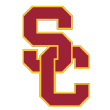
1. **Sam Darnold, QB, Southern California
Darnold has everything NFL teams want in a starter. He has a big frame (6-foot-4, 225 pounds), makes quick decisions and is an accurate, natural passer. He completed 67.2 percent of his passes last season and ranked second in the nation in Total QBR (86.8). Darnold has thrown too many interceptions to start the 2017 season -- four in two games -- and he has an unorthodox, long delivery that will have to be tweaked. But the third-year sophomore is an exciting prospect who could go No. 1 overall in April's draft.
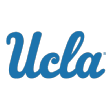
2. *Josh Rosen, QB, UCLA
Coming off a stellar freshman season in 2015, Rosen was a sleeper pick to win the Heisman Trophy last year. Things didn't go well, as he had only 10 touchdown passes in six starts before injuring his shoulder and missing the rest of the season. He already has nine touchdown passes -- and no picks -- in two games this season, including a comeback win over Texas A&M in Week 1. The 6-4, 218-pound Rosen throws a great ball, and NFL scouts are watching him closely.

3. *Josh Allen, QB, Wyoming
The 6-5, 233-pound Allen didn't have a great game against Iowa to open the season, but judge him on his entire body of work. He is super raw, but he can really sling it. His numbers weren't great last season -- 28 touchdown passes, 15 interceptions while completing 56 percent of his passes -- but NFL teams will take into account the talent around him. The Wyoming offense lost 47 touchdowns from last season's team, along with its center.
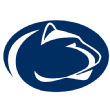
4. *Saquon Barkley, RB, Penn State
Barkley is a lights-out athlete with a great lower body and quick feet who shows tremendous balance. He rushed for 1,496 yards and 18 touchdowns last season and had 1,076 yards as a freshman. He already has 359 yards from scrimmage and four touchdowns this season. Barkley (5-11, 230) will also help out in the passing game; he has 55 career catches. He plays extremely hard, too.
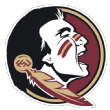
5. **Derwin James, S, Florida State
James played only two games in 2016 after suffering a torn meniscus in his left knee. The former five-star recruit was terrific as a freshman for the Seminoles with 91 tackles, 9.5 tackles for loss, 4.5 sacks and two forced fumbles. FSU coaches are going to use the 6-3, 211-pound James all over the field this season, and it started in the opener versus Alabama.
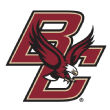
6. Harold Landry, OLB, Boston College
After leading the nation in sacks (16.5) last season, Landry could have been a late first- or early second-round pick if he had entered the 2017 draft. He also had 22 tackles for loss. There is value in his versatility. The 6-3, 257-pound Landry can play outside linebacker in a 3-4 defense or end in a 4-3. He has a sack and 2.0 tackles for loss so far in 2017.
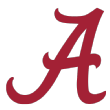
7. *Calvin Ridley, WR, Alabama
With 161 catches and 14 touchdown receptions in his first two collegiate seasons, the cat-quick Ridley (6-1, 188) has been one of the nation's top wide receivers since he stepped onto the field. What I really like about him is his competitiveness. He's a nightmare to try to tackle in the open field. He torched Florida State's talented secondary in the season opener with seven catches for 82 yards and a touchdown.

8. *Minkah Fitzpatrick, DB, Alabama
There is some projection here because Fitzpatrick (6-1, 203) has played both corner and safety and will move around this season. The versatility is a plus, and coach Nick Saban loves him. Fitzpatrick had eight interceptions in his first two collegiate seasons, and four of those were returned for touchdowns. I also like that Fitzpatrick will get after it on special teams. He had 11 special-teams tackles in 2016.
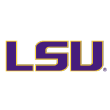
9. *Arden Key, OLB, LSU
The 6-6, 265-pound Key is a fantastic pass-rushing talent who can close quickly on quarterbacks. He has 17 sacks in two seasons (12.0 in 2016). He needs to improve against the run, but that should come in time when he adds weight to his frame. After taking a leave of absence from the LSU team in the spring, Key had shoulder surgery and hasn't played yet this season. He's expected to start at Mississippi State this weekend.

10. *Christian Wilkins, DL, Clemson
Clemson just keeps producing first-round picks. Wilkins could be next. At 6-4, 300 pounds, he moves inside and outside for the Tigers. Wilkins is a Jonathan Allen-type lineman. He could be an end in a 3-4 defense or a 3-technique tackle in a 4-3. Wilkins had 3.5 sacks and 13 tackles for loss last season. He had 1.5 sacks in the win over Auburn last weekend, and now he'll have a chance to get after Lamar Jackson & Co. in Louisville in Week 3.

11. *Derrius Guice, RB, LSU
Guice isn't the athletic specimen Leonard Fournette is, but I liked everything I saw from him last season. Guice rushed for 1,387 yards and 15 touchdowns -- and averaged 7.6 yards per carry -- while Fournette battled injuries. Guice (5-11, 218) showed good burst running between and outside the tackles, and he's a physical runner. He has four rushing touchdowns in two games so far in 2017.

12. *Orlando Brown, OT, Oklahoma
I wrote about Brown earlier this week, and the 6-8, 345-pound left tackle was outstanding in the Sooners' win at Ohio State. He helped protect OU quarterback Baker Mayfield from a defense that is loaded with NFL talent. Brown is nimble for a big man, getting to the second level with ease. He has great feet and can slide easily outside to pick up blitzing linebackers. Don't worry about Brown having to move to the right side in the NFL -- I think he's a left tackle all the way.
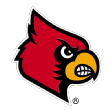
13. *Lamar Jackson, QB, Louisville
Welcome to the Big Board, Heisman Trophy winner. I was asked a lot about him last year, and I said I wanted to see major improvement in Jackson's passing to consider him an NFL quarterback prospect. Well, it's early, but his start to the season has been promising. Jackson's completion percentage is way up (64.7 from 56.2 in 2016), he has put on some good weight and his delivery looks more fluid. And he has done all of that while retaining his dynamic athleticism and speed. The matchup versus Clemson this weekend is important because the Cardinals' schedule gets easier afterward. Jackson will have NFL prospects chasing after him all game. I'm excited to see how he plays, and I know NFL teams are watching, too.
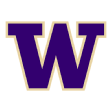
14. *Vita Vea, DT, Washington
At 6-4, 346 pounds, Vea is more than a space-eater. He has some quickness and can penetrate along the interior. He had 5.0 sacks and 39 total tackles last season. I think Vea can be an every-down player in the NFL, not just a two-down tackle. He reminds me of Haloti Ngata, who had three consecutive NFL seasons with 5.0 sacks or more.
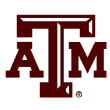
15. *Christian Kirk, WR, Texas A&M
Kirk's size (5-11, 200) might ding him in the eyes of scouts, but he's a tremendous receiver and return man with excellent speed. He had 163 catches and 16 receiving touchdowns in his first two collegiate seasons, plus three punt-return TDs in 2016. He has 11 catches and a touchdown so far in 2017. From everything I've heard, Kirk is a studious guy, too. His 576 yards after the catch last season ranked eighth in the country.

16. *Connor Williams, OT, Texas
After digging into Williams' 2016 tape, I really liked what I saw. He's a pure left tackle prospect with great feet and balance, and he just didn't get beat in pass protection. But Williams (6-6, 315) didn't have a great game to open the season against Maryland. He did get beaten in that game, and that was discouraging. I think he'll pick it up, though, and play like he did last season. He faces a big test this weekend at USC.

17. *Courtland Sutton, WR, SMU
You should get to a TV at some point this season to check out the Mustangs. Sutton is a phenomenal talent. He had 76 catches and averaged 16.4 yards per catch last season -- and had 19 total touchdowns from 2015-16 -- but he's still under the radar. The 6-4, 215-pound Sutton is a big-bodied matchup nightmare on the outside. He leads the country this season with five receiving touchdowns, including four in a win over North Texas.

18. *Ronald Jones II, RB, USC
Jones has gone under the radar among running backs, but he impressed me as a pure runner in 2016, and he looks stronger this season. He had 2,069 rushing yards and averaged 6.3 yards per carry in his first two seasons at USC, and he's already up to five rushing touchdowns on 6.7 YPC in 2017. He was great against Stanford. I'd like to see the Trojans involve him in the passing game to cater to his skill set -- he has only 20 career catches.
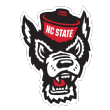
19. Bradley Chubb, DE, NC State
Like Harold Landry, Chubb could have entered the 2017 draft and been in the first-round discussion. He had 10.5 sacks and 21.5 tackles for loss last season after posting 5.5 sacks and 11 tackles for loss in 2015. Chubb (6-4, 260) showed good takeoff from the edge as a pass-rusher, and he has an excellent mix of speed and power. He already has 5.0 tackles for loss this season.

20. *Tremaine Edmunds, OLB, Virginia Tech
At 6-5, 250 pounds, Edmunds is a gifted athlete and physical specimen. And he lives in the backfield. A year after recording 106 total tackles, 18.5 tackles for loss and 4.5 sacks, he's already up to 21 total tackles, 4.0 tackles for loss and 1.5 sacks through two games this season. His brother, Terrell, is also an NFL prospect -- he's my No. 4-ranked underclassman safety.

21. *Clelin Ferrell, DE, Clemson
This is an upside pick because Ferrell hasn't played a ton. He's only a third-year sophomore. But I like what I've seen, and he came on strong last season with 6.0 sacks and 12.5 tackles for loss. At 6-5, 260 pounds, Ferrell has the size that makes scouts turn their heads, and he showed some quickness off the edge. He has a sack already this season.

22. *Ronnie Harrison, S, Alabama
Harrison has gone overlooked at times on a loaded Crimson Tide defense, but he's a really good player. He's aggressive and loves to hit. Harrison (6-3, 216) can cover, too. He had two interceptions last season, including a pick-six at Tennessee. He has 13 tackles and a sack in two games this season.
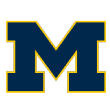
23. Maurice Hurst, DT, Michigan
The Wolverines had a senior-laden defensive line in 2016, and Hurst didn't start. But the 6-2, 282-pound tackle had 4.5 sacks and 11.5 tackles for loss and stood out while consistently splitting double-teams and getting into the backfield. Now a starter, Hurst impressed in the Wolverines' win over Florida in Week 1, in which Michigan allowed only 192 yards. He had a tackle for loss.
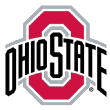
24. *Sam Hubbard, DE, Ohio State
Hubbard isn't a pass-rusher on the same talent level as former Buckeye Joey Bosa, but he's consistently solid and reliable. At 6-5, 265 pounds, Hubbard stands out on a super-talented Ohio State defense. Hubbard had 3.5 sacks and 8.0 tackles for loss in 2016 after recording 6.5 sacks, 8.0 tackles for loss and an interception the season before. He already has 2.0 sacks through two games in 2017. Along with Tyquan Lewis and Nick Bosa, Ohio State has an immensely talented defensive line.
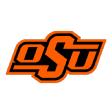
25. *Mason Rudolph, QB, Oklahoma State
Here are Rudolph's numbers in 30 starts for the Cowboys: 642-for-1,020 passing (62.9 percent) for 9,352 yards with 61 touchdown passes, 17 interceptions and a Total QBR of 75.6. That's great, and all of his weapons -- including stud wideout James Washington -- returned this season. Rudolph (6-5, 230) has a good, not great, arm, and he's not scared to take chances down the field. He's a poised, veteran leader who has been consistent throughout his career. Oklahoma State hasn't played a tough game yet this season, but I like what I've seen from him.
Who should be the early favorite for No. 1 in the 2018 draft?
How does Luka Doncic's prodigious production at age 18 project the 2018 prospect will perform in the NBA?
As Insider's Mike Schmitz detailed earlier this week, Doncic's role in helping lead Slovenia to an unlikely gold medal in this month's Eurobasket championships further added to his résumé as the most accomplished prospect in next year's draft. Even before that, however, Doncic's performance for Real Madrid in Euroleague and Spanish ACB play marked him as an elite prospect
Is he the best European prospect ever? And should he be considered the early leader for the No. 1 pick over prospects such as Michael Porter Jr. and Marvin Bagley III? Let's take a look.
How Doncic projects to the NBA
Kevin Pelton: During 2016-17, when he turned 18 midway through the season, my translations of ACB statistics to their NBA equivalent suggest Doncic played at nearly an average NBA level. His player win percentage (the per-minute version of my wins above replacement player metric, akin to PER) was .488 -- not far from the average of .500.
Doncic was even better against the stiff competition in Euroleague play, where his translated .595 player win percentage was the best among any regular. New LA Clippers guard and international veteran Milos Teodosic ranked second among that group at .551.
Factoring in both those performances, plus Doncic's more limited minutes in previous seasons, his translated statistics suggest Doncic would already be an excellent playmaker for a wing as well as a strong rebounder for a shooting guard. However, Doncic probably would struggle to score efficiently because of his middling 3-point shooting; he shot just 33.3 percent from the shorter FIBA 3-point line across all competitions.
Overall, my translations show Doncic's 2016-17 level of play as relatively similar to Charlotte Hornets reserve Jeremy Lamb. (Because of his combination of skills, Doncic's performance isn't all that similar to any current NBA player.) That doesn't sound very impressive until you consider that Doncic is nearly seven years younger than Lamb.
How well do those translated statistics compare to the scouting consensus on Doncic's current level of play?
Jonathan Givony: The scouting consensus is still coming together at this stage for Doncic, and I expect that to be an ongoing process all season long leading up to draft night. Doncic is a unique prospect, pretty much unprecedented, as Schmitz laid out on Monday, with how productive he has been at such an incredibly young age.
There are different schools of thought from NBA executives about the extent of Doncic's long-term upside, but I haven't heard too many people question his jump shot as one of the reasons for that. While it's true he has hit only 33 percent of his career 392 3-point attempts, Doncic has a beautiful stroke both with his feet set and off the dribble, along with deep range, and I believe that he will find a way to quicken his release and get his shot off more effectively at his size as his career moves along. Doncic is a big time shot-maker already, which is what you hope to see from a guy his age at this level of competition. The efficiency will come in time, I believe.
The fact that just about half of Doncic's field goal attempts have come from beyond the arc for his career, and his near-80 percent free throw shooting, leaves a lot of room for optimism when combined with his excellent mechanics and touch. If anything, Doncic's overconfidence in his jump shot is what has led to his pedestrian 3-point percentages. Doncic is such a good shooter, he feels he can pull up for Stephen Curry-type 3s at any moment, something defenses are often happy to concede, instead of having him probe with his dribble. I think as Doncic's career moves forward, he will find a better balance for when to take these types of shots, and how to get them off more cleanly.
Regarding the rebounding and playmaking, there's no question it tells a significant story. Doncic's career 9.3 rebounds per 40 minutes is absolutely elite for a guy who sees most of his minutes at either guard spot. While he's not incredibly long relative to his height, nor is he overwhelmingly explosive, Doncic's feel for the game allows him to anticipate the ball coming off the rim, and his strong frame, and impressive toughness helps do the rest. That's one of the things scouts love the most about Doncic -- his versatility, which should allow him to play anywhere from 1-4 in the NBA, and gives coaches great flexibility with lineup configurations.
As you touched on, and we all saw at Eurobasket, Doncic is an elite passer who is at his best with the ball in his hands. He has no problem bringing the ball up the court, getting a team into its offense, and is one of the most advanced pick-and-roll players you'll ever see relative to his age. Hopefully, whoever drafts Doncic does so with the intention of playing him on the ball as much as possible, even though there are some challenges he'll have to overcome to do so full time in the NBA.
How Doncic compares to past European prospects
Pelton: One question worth exploring with Doncic is whether he's the best prospect ever from Europe. If he had been eligible for the 2017 draft, he would have had the highest WARP projection on record for a European prospect. I have data on them back through 2006, when Andrea Bargnani was drafted No. 1 overall, and here's that list.
Top European prospects by projected WARP
Name Year Pick Age Win% WARP
Luka Doncic 2018 - 18.1 .537 5.2
Ricky Rubio 2009 5 18.5 .480 3.7
Dragan Bender 2016 4 18.4 .467 3.4
Clint Capela 2014 25 19.9 .497 3.4
Jusuf Nurkic 2014 16 19.7 .490 3.3
Kristaps Porzingis 2015 4 19.7 .487 3.2
Nikola Jokic 2014 41 19.2 .468 3.1
Danilo Gallinari 2008 6 19.7 .473 2.9
Nikola Mirotic 2011 23 20.2 .482 2.9
Rudy Fernandez 2007 24 22.0 .521 2.9
Andrea Bargnani 2006 1 20.5 .485 2.8
Since 2006
Adding a year of development to Doncic's translated statistics to project how he'd do in the NBA next season gives him the best projected player win percentage of any European prospect for whom I have data, despite the fact that he's also younger than any of these prospects at the time they were drafted. As a result, while we don't have data for earlier prospects like Dirk Nowitzki, I'm comfortable saying Doncic is the best European prospect ever. His main competition for that title is Ricky Rubio, who was even more effective than Doncic in the ACB at younger ages but never really developed beyond that point.
Would you agree that Doncic is the best European prospect we've seen? And what does it mean that besides him and Rubio, the top players on the list are almost exclusively big men?
Givony: I do agree that Doncic is the best European prospect we've seen, at least in terms of productivity and what he has accomplished to this stage of his career. There simply never has been anyone like him as far as I know. He's certainly the best one I've seen since I started scouting the NBA draft in 2004. I was out in Spain a few times watching Rubio through the years, and I believe what Doncic has done in FIBA, Euroleague and ACB play already far exceeds what Rubio accomplished at the same age. It was fascinating for me to see both of them on the court at the same time in the Eurobasket semifinals last week, considering the amount of hype they shared as Euro phenoms, and I thought Doncic totally outplayed him, even though he was 8½ years younger than him.
I never saw Nowitzki when he was in the draft, but one guy I did study extensively (on two separate trips to Europe), and who might end up being one of the best European players ever, was Giannis Antetokounmpo. Giannis was almost the same age as Doncic is now back when we first scouted him, and it's incredible to compare the differences in the level of competition they are at and their level of polish. I distinctly remember NBA scouts telling me they would never consider drafting Giannis because he wasn't able to dominate even at an incredibly poor level of competition like the Greek 2nd division (which is almost a semi-pro league in terms of salaries and conditions), and to contrast that with Doncic nearly averaging a triple-double (15.6 points, 8.9 rebounds, 8.4 assists) on a per-40 basis in the Euroleague as a 17/18-year old is simply astounding.
Doncic obviously doesn't have anywhere near the same physical tools as Giannis, but I really don't think there's a single player in this draft class (or 2017 for that matter) who could step on the court and make the type of impact he has in FIBA, Euroleague or ACB play at that age. Now that we've been able to see him do it against legitimate NBA players in their prime, like Kristaps Porzingis, Marc Gasol, Evan Fournier, Pau Gasol, Rubio and others, it really eliminates a lot of the "mystery" involved in translating his production from Europe to the NBA.
Regarding your question about why most of the top projected Europeans according to WARP are bigs, I think it's the same answer as to why the best European players in the NBA are mostly bigs. It's very hard to make the NBA from outside the U.S. without being really tall (and actually really skilled). I did a quick search through my database for the most productive players born outside of North America last year according to PER, and found that among the top 18, only one of them (Eurobasket MVP and Doncic's teammate/mentor Goran Dragic) is under 6-9.
International Talent Trending Toward Bigs
PLAYER NATIONALITY HT MPG PER EWA
Nikola Jokic Serbia 6'11 27.9 26.1 15.5
Giannis Antetokounmpo Greece 6'11 35.9 25.7 22.8
Joel Embiid Cameroon 7'2 25.4 24 5.1
Enes Kanter Turkey 6'11 20.5 23.4 9.9
Rudy Gobert France 7'2 33.2 23 18.1
Clint Capela Switzerland 6'11 24.2 21.4 9.6
Jusuf Nurkic Bosnia 6'11 28.6 20.8 3
Marc Gasol Spain 7'1 34.6 20.1 12.7
Goran Dragic Slovenia 6'4 33.7 19.8 11
Jonas Valanciunas Lithuania 6'11 25.5 19.7 10.2
Pau Gasol Spain 7'2 24.9 19.3 8.5
Nene Hilario Brazil 6'10 17.9 19.2 5.6
Nikola Vucevic Montenegro 7'2 28.8 19.1 8.9
Wily Hernangomez Spain 6'11 18.4 18.9 5.3
Kristaps Porzingis Latvia 7'3 32.8 17.5 7.2
Danilo Gallinari Italy 6'9 33.9 17.4 7
Serge Ibaka Congo 6'10 30.5 17.4 5.6
Dirk Nowitzki Germany 6'11 26.4 16.9 4.3
It's actually pretty ridiculous to me how many starting NBA frontcourt players these days were born outside of the U.S. It seems to be so much more rare to make it as a guard or a wing than as a forward or big, which is going to make for some interesting conversations come draft time regarding Doncic.
Will NBA teams look at him as more of a guard, which offensively there's no question he's best suited for, or as a wing -- where he might be better equipped defensively? That probably doesn't mean as much in today's NBA, but fit is important, and you'll want to put him in the right role and surround him with the right type of guys to maximize his potential.
How Doncic compares to other No. 1 candidates
Givony: Kevin, when we are talking about a potential No. 1 pick like Doncic, does it make sense for NBA teams to think about how many other non-North American wing players like him went No. 1? Or even the fact that it's just rare in general to take a wing No. 1? Has the NBA game evolved enough to the point that players like Doncic should be considered at the top? We're seeing that the market for big men has been severely diminished in free agency, so should teams start drafting accordingly? Will that help Doncic's stock?
Pelton: Good questions. I think the biggest question about Doncic's statistical projections is how they'll translate against NBA-caliber athleticism. Because so much more frontcourt talent has come from Europe, we've had a better idea of how big men would translate to the NBA than wings like Doncic. So I can understand some skepticism.
Setting aside that concern, I wouldn't hesitate to take a wing No. 1, particularly one as comfortable with the ball in his hands as Doncic. Including Antetokounmpo, four of the top 11 players in wins based on ESPN's real plus-minus (RPM) last season were wings, so it's clear that the best wings can have as much impact as the best big men or point guards.
We'll know a lot more about the other candidates for the No. 1 pick once they've set foot on the floor in college, but it's going to be difficult for DeAndre Ayton, Marvin Bagley III and Michael Porter Jr. to match Doncic's statistical projection. Only one player in my college database ever has. Here's how Doncic's 2018 projection compares to the top prospects since 2005:
How Doncic Compares To Earlier Prospects
Name Year Pick Age Win% WARP
Anthony Davis 2012 1 19.1 .570 5.5
Luka Doncic 2018 - 18.1 .537 5.2
Kenneth Faried 2011 22 21.4 .604 5.1
DeJuan Blair 2009 37 20.0 .569 5.0
Kevin Love 2008 5 19.6 .543 4.6
James Harden 2009 3 19.7 .528 4.2
Kyrie Irving 2011 1 19.1 .514 4.2
Blake Griffin 2009 1 20.1 .535 4.2
DeMarcus Cousins 2010 5 19.7 .523 4.1
Stephen Curry 2009 7 21.1 .544 3.9
Outside of the undersized big men (Blair and Faried, both drafted lower), a WARP projection better than 4.0 has generally been a guarantee of stardom. So should Doncic start the year No. 1 on teams' boards? And what must the college prospects show as freshmen to match what Doncic has already done?
Givony: Doncic should start the year at No. 1 on our board, that much is clear. I think he proved and "earned" that over the course of the Eurobasket, after a somewhat disappointing Euroleague Final Four in May. As far as the league consensus, every team will see it different I'm sure. A few of them actually might not have scouted him much at all still, certainly not if we're talking about the highest level decision-makers in their organization.
I don't think all that many NBA general managers have scouted Michael Porter, DeAndre Ayton or Mohamad Bamba enough to be able to comfortably say yet who they would definitively take in June. I can say with a high degree of confidence that zero NBA GMs or high-level executives have ever watched Marvin Bagley play in person, since he simply hasn't played in any events that they were allowed to scout due to his late decision to skip his senior year of high school. So I do believe that things are very much wide open at this stage.
In that regard, the draft is still a bit of a blank slate for most NBA teams, but they will make up ground very quickly starting in early October when NCAA practices officially begin, followed by the pro days, the big preseason tournaments in November, the conference schedule and then the long pre-draft process that will have a huge say in how things turn out. And that's where international prospects are at somewhat of a disadvantage.
Looking at the list I posted above of the 18 most productive international players in the NBA, what's the common thread? Pretty much every single one of them was picked too low in their individual draft. Some 20, 30 or 40 spots too low. With as small as the world has become, and even though we have more film and information at our fingertips than ever, I still believe that international players are at a disadvantage in the NBA draft process compared with their NCAA peers.
There is simply a comfort level and a familiarity for NBA teams in scouting college players that internationals don't enjoy. They get to work them out against one another in June. They can interview them and have them conduct personality assessments. There are no buyouts. It's not as complicated to get their medical information. The background intel is cleaner and more consistent. They can go watch them practice whenever they please in-season (forget about trying to ask Real Madrid to come in and watch a practice ...). Most NBA execs will get over to Europe once or twice, and what if you happen to fall on one or two bad games? Doncic's season probably won't be over until a few days before the NBA draft. These are mostly superficial things that really shouldn't matter that much in the grand scheme of things, but they add up.
That's before we even get into the question marks about Doncic's game. Can he be a go-to scorer in the NBA? Is he the type of guy you can throw the ball to as the shot clock runs down and ask him to go get a bucket? We should get a much better answer to those questions as the season progresses. That wasn't really his role for Real Madrid last year (understandably), but with Sergio Llull suffering a torn ACL last month, they probably will ask him to become a much more dominant offensive player.
I think one of the biggest hurdles Doncic might face is since he has set the bar so incredibly high for himself already, simply maintaining his level of play from last year, with an increase in minutes, will be a challenge in its own right. Will scouts consider that a disappointment? You already hear some teams whispering that they don't know exactly the extent of where his upside lies, because he's already so physically mature, and so polished. I don't buy that personally, but he's probably going to have to show another gear to maintain his momentum, and that's a big ask considering what he already has demonstrated.
As you alluded to, it's not just going to depend on him. This is a talented draft class with some really interesting college players jockeying for the top spots. I'm not exactly sure what any of them have to show precisely, because we've seen all kinds of guys go No. 1 in the past few years. Some of them didn't have much of an impact on the win column in college, like Ben Simmons or Markelle Fultz, so it's tough for me to say that Michael Porter definitively has to lead Missouri to the NCAA tournament to go No. 1. Karl-Anthony Towns averaged 10 points for Kentucky and went No. 1. Could Mohamed Bamba or DeAndre Ayton do the same? Anthony Bennett had a terrible pre-draft process and ended up there. Kyrie Irving played only 11 college games. There isn't always much rhyme or reason to the NBA draft as we've found.
The next nine months are going to be very entertaining, and we're all looking forward to seeing how it plays out. I would recommend to fans following along to approach it with an open mind.
Name Year Pick Age Win% WARP
Anthony Davis 2012 1 19.1 .570 5.5
Luka Doncic 2018 - 18.1 .537 5.2
Kenneth Faried 2011 22 21.4 .604 5.1
DeJuan Blair 2009 37 20.0 .569 5.0
Kevin Love 2008 5 19.6 .543 4.6
James Harden 2009 3 19.7 .528 4.2
Kyrie Irving 2011 1 19.1 .514 4.2
Blake Griffin 2009 1 20.1 .535 4.2
DeMarcus Cousins 2010 5 19.7 .523 4.1
Stephen Curry 2009 7 21.1 .544 3.9
Outside of the undersized big men (Blair and Faried, both drafted lower), a WARP projection better than 4.0 has generally been a guarantee of stardom. So should Doncic start the year No. 1 on teams' boards? And what must the college prospects show as freshmen to match what Doncic has already done?
Givony: Doncic should start the year at No. 1 on our board, that much is clear. I think he proved and "earned" that over the course of the Eurobasket, after a somewhat disappointing Euroleague Final Four in May. As far as the league consensus, every team will see it different I'm sure. A few of them actually might not have scouted him much at all still, certainly not if we're talking about the highest level decision-makers in their organization.
I don't think all that many NBA general managers have scouted Michael Porter, DeAndre Ayton or Mohamad Bamba enough to be able to comfortably say yet who they would definitively take in June. I can say with a high degree of confidence that zero NBA GMs or high-level executives have ever watched Marvin Bagley play in person, since he simply hasn't played in any events that they were allowed to scout due to his late decision to skip his senior year of high school. So I do believe that things are very much wide open at this stage.
In that regard, the draft is still a bit of a blank slate for most NBA teams, but they will make up ground very quickly starting in early October when NCAA practices officially begin, followed by the pro days, the big preseason tournaments in November, the conference schedule and then the long pre-draft process that will have a huge say in how things turn out. And that's where international prospects are at somewhat of a disadvantage.
Looking at the list I posted above of the 18 most productive international players in the NBA, what's the common thread? Pretty much every single one of them was picked too low in their individual draft. Some 20, 30 or 40 spots too low. With as small as the world has become, and even though we have more film and information at our fingertips than ever, I still believe that international players are at a disadvantage in the NBA draft process compared with their NCAA peers.
There is simply a comfort level and a familiarity for NBA teams in scouting college players that internationals don't enjoy. They get to work them out against one another in June. They can interview them and have them conduct personality assessments. There are no buyouts. It's not as complicated to get their medical information. The background intel is cleaner and more consistent. They can go watch them practice whenever they please in-season (forget about trying to ask Real Madrid to come in and watch a practice ...). Most NBA execs will get over to Europe once or twice, and what if you happen to fall on one or two bad games? Doncic's season probably won't be over until a few days before the NBA draft. These are mostly superficial things that really shouldn't matter that much in the grand scheme of things, but they add up.
That's before we even get into the question marks about Doncic's game. Can he be a go-to scorer in the NBA? Is he the type of guy you can throw the ball to as the shot clock runs down and ask him to go get a bucket? We should get a much better answer to those questions as the season progresses. That wasn't really his role for Real Madrid last year (understandably), but with Sergio Llull suffering a torn ACL last month, they probably will ask him to become a much more dominant offensive player.
I think one of the biggest hurdles Doncic might face is since he has set the bar so incredibly high for himself already, simply maintaining his level of play from last year, with an increase in minutes, will be a challenge in its own right. Will scouts consider that a disappointment? You already hear some teams whispering that they don't know exactly the extent of where his upside lies, because he's already so physically mature, and so polished. I don't buy that personally, but he's probably going to have to show another gear to maintain his momentum, and that's a big ask considering what he already has demonstrated.
As you alluded to, it's not just going to depend on him. This is a talented draft class with some really interesting college players jockeying for the top spots. I'm not exactly sure what any of them have to show precisely, because we've seen all kinds of guys go No. 1 in the past few years. Some of them didn't have much of an impact on the win column in college, like Ben Simmons or Markelle Fultz, so it's tough for me to say that Michael Porter definitively has to lead Missouri to the NCAA tournament to go No. 1. Karl-Anthony Towns averaged 10 points for Kentucky and went No. 1. Could Mohamed Bamba or DeAndre Ayton do the same? Anthony Bennett had a terrible pre-draft process and ended up there. Kyrie Irving played only 11 college games. There isn't always much rhyme or reason to the NBA draft as we've found.
The next nine months are going to be very entertaining, and we're all looking forward to seeing how it plays out. I would recommend to fans following along to approach it with an open mind.
Womb Raider
5* Gooneral
Fantasy football cheat sheet: Start, sit and more tips for Week 3
Just when it seemed like defense was taking over in the NFL, the 49ers and Rams gave us a game for the ages on Thursday night with Los Angeles eeking out a 41-39 victory.
Todd Gurley's three touchdowns (two rushing, one receiving) and Carlos Hyde's two scores highlighted the high-scoring game, and anyone with these running backs (or Sammy Watkins/Jared Goff) in their fantasy lineup this week has to feel great heading into the weekend with a big head start.
Now the question is this: Who else is primed for a huge game this week?
Our weekly ESPN Insider cheat sheet provides a rundown of the greatest hits from all of our Insider fantasy football content. You'll find answers to the top questions of the week, along with injury updates, matchup advantages and wild-card plays from Eric Karabell, Tristan H. Cockcroft, Mike Clay, Al Zeidenfeld, Matt Bowen, KC Joyner and Scott Kacsmar. It's all the best tips, distilled into one handy file.
Here's what our experts are saying about Week 3:
Top tips
Cam Newton, QB, Carolina Panthers
Newton isn't running as much as he once did, and, like last season, he is struggling with accuracy on his passes. If there was ever a time for him to start heating up, though, this is the week against the poor Saints defense, Zeidenfeld writes in his daily fantasy best buyscolumn.
"After two straight disappointing weeks from Newton, this is the perfect time to get back in on the Carolina quarterback," he writes. "The Saints are the cure to all that ails opposing quarterbacks. New Orleans has allowed a league-high 14 completions on balls traveling 15-plus yards in the air [tied with the Colts] which has helped allow Sam Bradford and Tom Brady to throw for 341 and 436 yards against them in consecutive weeks. It's still unknown if Newton will run the ball anywhere close to as much as he did in the past, which brings his value down just a little bit, but the matchup is just too good to ignore ... with or without rushing touchdowns."
Chris Carson, RB, Seattle Seahawks
Two weeks into the season is all it took for one of the four Seahawks running backs to emerge, and Carson is that guy. The 249th pick in the 2017 NFL draft, Carson busted out with 93 yards on 20 carries and distanced himself from Seattle's other options in the backfield in the process. Bowen is optimistic about Carson's fantasy value going forward:
"Remember, this is the same guy who flashed during the preseason. The talent is there with Carson and so is the system fit in Seattle. The Seahawks desperately need that lead back, the downhill runner who can pound the football in the fourth quarter. Based on what I saw on Sunday, Carson is the back you want to roster on this Seahawks team. He has the upside of a low-end RB2 moving forward for a team that is going to run the rock."
Le'Veon Bell, RB, Pittsburgh Steelers
Is this week's game at Chicago the one where Bell finally busts out and plays like the player who was drafted with one of the first two picks of almost every fantasy draft this season? Joyner takes a closer look at the blocking numbers, and finds that Bell and the Steelers have a lot working in their favor heading into this road game against the Bears.
"Bell has scored only 20.8 fantasy points through the first two weeks of the season, but his struggles haven't been due to sub-par run blocking, as Pittsburgh's 51.6 percent good blocking rate (GBR) placed sixth best in Week 2," he writes. "The Steelers also have the makings of a mismatch in pass blocking, as they rate first in ESPN Stats & Information's pass protection metric (PPM) and the Bears' defense ranks 28th in QC (7.0) and 25th in TIP (2.4). Add it up, and it means Bell and Antonio Brown should reach their elite fantasy production potential, Ben Roethlisberger has strong QB1 potential and Martavis Bryant is a very good Week 3 flex option."
Playing the matchups
Odell Beckham Jr., WR, New York Giants
We know what you're thinking -- the Giants' offense has been extremely disappointing through Week 2, and Beckham's four catches for 36 yards in his 2017 debut on Monday didn't exactly win anyone anything in fantasy. Even so, you can't overlook a good matchup when Beckham has one, and Clay writes that this is one of those weeks.
"Beckham made his 2017 debut on Monday night at less than full health, but common logic suggests he should be closer to a full go against Philadelphia this weekend. That would be bad news for an Eagles defense that has holes at the cornerback position," he writes.
"Jalen Mills has been pummeled for 15 receptions and 177 yards on a league-high 21 targets this season. Beckham torched Philadelphia for 196 yards and a pair of touchdowns last season, though only 19 of his 99 routes were against Mills (two catches, 43 yards). Beckham moves around the formation quite a bit, so he'll see some of Eagles rookie Rasul Douglas as well. Assuming he doesn't have a setback, Beckham should be locked into lineups this week."
Kelvin Benjamin, WR, Carolina Panthers
Benjamin may have only seven catches through Week 2, but Bowen believes that the tall receiver has a chance to build on a solid game last week with a game against the Saints.
"Deep middle-of-the-field throws. The quick passing game outside the numbers. And red zone targets. Hey, this is what Benjamin owners signed up for," he writes. "And after that really disappointing performance in Week 1 (five targets, one reception, 25 yards), Benjamin gave owners a little bit more on Sunday with 77 yards on six grabs (eight targets).
"Yeah, it's still a line that needs to improve, but Benjamin had red zone opportunities (slant, fade) and his role/volume should expand even more now with tight end Greg Olsen out for an extended period of time with a broken foot. That production needs to be replaced. And with a matchup this week versus a Saints secondary that has been absolutely gashed through two games, giving up a total of 777 passing yards, I'm locking in Benjamin as a high-end WR2 this week."
Travis Kelce, TE, Kansas City Chiefs
A number of other top tight ends around the league are already dinged up, leaving Kelce as one of the few elite options at the position. His matchup against a tough Chargers defense shouldn't scare anyone away from the Chiefs' star tight end in Week 3, Zeidenfeld writes:
"Kelce has 17 targets in two games, including four red-zone looks. Coming off last season's 22.35-percent market share of red-zone targets, the 50 percent he's seeing through two games will certainly regress, but it's extremely encouraging to see the Chiefs finally utilizing their biggest and best target when it matters. The Chargers' points allowed to tight ends could lead people elsewhere, but with two games being such a small sample and the two teams they've faced [the Broncos and Dolphins] not exactly being offenses that feature their tight ends, this looks like a great place to invest in Kelce."
Martavis Bryant, WR, Pittsburgh Steelers
Brown gets all the attention in the Steelers' receiving corps, but Bryant has big-play ability that shouldn't go overlooked in this week's road game against Chicago.
"While Brown is always a preferred target to stack with Ben Roethlisberger, I think this could be a big week for Bryant in Chicago," Kacsmar writes in his Best NFL DFS matchups column. "He scored his first touchdown since 2015 last week against the Vikings and was open for another huge gain had there not been pass interference on the defense. He should have great matchups against this no-name secondary and a defense that has struggled a lot through two games this year. I'd go for the cheaper stack of Roethlisberger and Bryant rather than Brown this week."
Injury impact
Rob Gronkowski and Danny Amendola, New England Patriots: Though listed as questionable, both Gronkowski (groin) and Amendola (concussion) are expected to play in Sunday's home game against Houston.
Jordy Nelson and Randall Cobb, Green Bay Packers: Nelson (quad) returned to practice this week and is progressing the way the team had hoped for Sunday's game against Cincinnati. He is officially listed as questionable, but it sounds like there's a good chance he'll be available. Cobb (shoulder) is considered doubtful.
Sam Bradford, Minnesota Vikings: The Vikes will be without Bradford (knee) for a second straight game, as the team ruled him out on Friday. That means another start for Case Keenum, which lowers the fantasy value of players such as Stefon Diggs and Kyle Rudolph.
Jimmy Graham, Seattle Seahawks: Graham (ankle) is considered a game-time decision for Sunday's road game at Tennessee. "We've just got to make sure he's OK all the way to game time, but he really feels like he can do it. So, we'll see," Carroll told Dori Monson on KIRO Radio 97.3 FM on Friday. If Graham can't play, Luke Willson will step in as Seattle's primary tight end against the Titans.
John Brown, Arizona Cardinals: Brown missed Week 2 due to a quad injury and didn't practice Thursday. Cardinals head coach Bruce Arians indicated earlier in the week that it would be "miraculous" if the receiver were available for the Monday night game against Dallas. With Brown unlikely to play, it will be another chance for J.J. Nelson to step in and get additional targets as the No. 2 receiver next to Larry Fitzgerald.
Lottery tickets
Theo Riddikk, RB, Detroit Lions
Riddikk is well-regarded in PPR leagues due to his ability to catch a high volume of passes out of the backfield. He may be more overlooked in fantasy circles this season due to the return of Ameer Abdullah, but Riddikk's role as a pass-catcher remains the same. Cockcroft sees promise with the veteran running back this week.
"The Atlanta Falcons' defense has been an advantageous matchup for opposing running backs for quite some time now," he writes, "with their 37.0 PPR fantasy points allowed through two weeks this season ranking second-most after they afforded the fourth-most [27.4] last season.
"They struggle the most to contain pass-catching running backs, which is why Riddikk, rather than Abdullah, gets the nod here. No defense has afforded more PPR fantasy points to running backs on receptions since the beginning of last season than the Falcons, who served up 19.5 points on six catches to Ty Montgomery in Week 2 alone. After a quiet Week 2 against the Giants, Riddikk should rebound with closer to the 5.3 receptions he averaged per game in 2016."
Rashard Higgins, WR, Cleveland Browns
Only three weeks into the season, and Higgins -- a fifth-rounder last season who only caught six passes in 16 games as a rookie -- has already established himself as one of the Browns' top offensive options in 2017. Zeidenfeld likes what he has seen out of the second-year receiver out of Colorado State.
"Kenny Britt has fallen out of favor with the Browns' coaching staff only two weeks into the season and Corey Coleman has been lost for the foreseeable future with a broken hand," he writes. "Enter Higgins, the Colorado State product who, for those of us who played college football DFS back in the day, was a staple week in, week out. A great route runner with the ability to get downfield and behind defenses is now thrust into a great opportunity and could very possibly lead the Browns in targets per game the rest of the way.
"The Colts have allowed 14 completions on balls that have traveled 15 or more yards in the air [tied for most in the league with the Saints], and have allowed opponents to complete those passes at a 66.7-percent rate [third-highest in the league]. Add the newfound target volume to what has been an inept defense the first two weeks of the season and we've got instant value opportunity without much downside risk at the price."
Jack Doyle, TE, Indianapolis Colts
Until Andrew Luck returns to the field, many fantasy managers are set on fading Colts -- even the big names like T.Y. Hilton and Donte Moncrief. Doyle is one who warrants some consideration this week against the Browns, though, Cockcroft writes.
"He has been one of the few parts of the Colts' offense that has been going right the first two weeks, and in Week 2, he seemed to flash the most chemistry with new quarterback Jacoby Brissett. Doyle should again be a big part of the game plan against the Cleveland Browns, who have had an awful time containing tight ends through two weeks, serving up 22.1 PPR fantasy points to Jesse James in the opener and 17.1 to Benjamin Watson in Week 2."
Jermaine Kearse, WR, New York Jets
Many Jets fans grumbled when the team traded away DT Sheldon Richardson to Seattle for Kearse and a second-round pick, but so far this season Kearse is the biggest bright spot on an otherwise bad Jets offense.
"The Jets had to have someone step up after losing Quincy Enunwa to injury this preseason. Kearse came over in a trade from Seattle and has quickly established himself as Josh McCown's main target," Kacsmar writes. "Kearse has two more touchdowns than Antonio Brown, Julio Jones and Odell Beckham Jr. combined in the start of this crazy season. Kearse is still a bargain since expectations are low for the Jets' offense, but the Miami defense is unexceptional. We know there's a good chance the Jets will be trailing again, too, so there should be plenty of garbage-time opportunities for Kearse."
Big question of the week
How will the Bears work out their running back rotation against the Steelers?
When Chicago hosts Pittsburgh on Sunday, it will do so with one of the best young running back combos in the league in second-year back Jordan Howard and rookie Tarik Cohen. Heading into the season, Howard was regarded as a top-10 running back, but he's in danger of his value dropping quickly based on the type of start Cohen -- a fourth-round pick -- is having to his NFL career. Last week against Tampa Bay, Howard suffered through a shoulder injury and rushed nine times for 7 yards and didn't catch a pass. Meanwhile, Cohen rushed seven times for 13 yards -- not great by any means -- but added eight catches for 55 yards in the passing game.
The running back who gets more snaps and steps forward against the Steelers could have the edge going forward, so that's something to watch closely.
Theo Riddikk, RB, Detroit Lions
Riddikk is well-regarded in PPR leagues due to his ability to catch a high volume of passes out of the backfield. He may be more overlooked in fantasy circles this season due to the return of Ameer Abdullah, but Riddikk's role as a pass-catcher remains the same. Cockcroft sees promise with the veteran running back this week.
"The Atlanta Falcons' defense has been an advantageous matchup for opposing running backs for quite some time now," he writes, "with their 37.0 PPR fantasy points allowed through two weeks this season ranking second-most after they afforded the fourth-most [27.4] last season.
"They struggle the most to contain pass-catching running backs, which is why Riddikk, rather than Abdullah, gets the nod here. No defense has afforded more PPR fantasy points to running backs on receptions since the beginning of last season than the Falcons, who served up 19.5 points on six catches to Ty Montgomery in Week 2 alone. After a quiet Week 2 against the Giants, Riddikk should rebound with closer to the 5.3 receptions he averaged per game in 2016."
Rashard Higgins, WR, Cleveland Browns
Only three weeks into the season, and Higgins -- a fifth-rounder last season who only caught six passes in 16 games as a rookie -- has already established himself as one of the Browns' top offensive options in 2017. Zeidenfeld likes what he has seen out of the second-year receiver out of Colorado State.
"Kenny Britt has fallen out of favor with the Browns' coaching staff only two weeks into the season and Corey Coleman has been lost for the foreseeable future with a broken hand," he writes. "Enter Higgins, the Colorado State product who, for those of us who played college football DFS back in the day, was a staple week in, week out. A great route runner with the ability to get downfield and behind defenses is now thrust into a great opportunity and could very possibly lead the Browns in targets per game the rest of the way.
"The Colts have allowed 14 completions on balls that have traveled 15 or more yards in the air [tied for most in the league with the Saints], and have allowed opponents to complete those passes at a 66.7-percent rate [third-highest in the league]. Add the newfound target volume to what has been an inept defense the first two weeks of the season and we've got instant value opportunity without much downside risk at the price."
Jack Doyle, TE, Indianapolis Colts
Until Andrew Luck returns to the field, many fantasy managers are set on fading Colts -- even the big names like T.Y. Hilton and Donte Moncrief. Doyle is one who warrants some consideration this week against the Browns, though, Cockcroft writes.
"He has been one of the few parts of the Colts' offense that has been going right the first two weeks, and in Week 2, he seemed to flash the most chemistry with new quarterback Jacoby Brissett. Doyle should again be a big part of the game plan against the Cleveland Browns, who have had an awful time containing tight ends through two weeks, serving up 22.1 PPR fantasy points to Jesse James in the opener and 17.1 to Benjamin Watson in Week 2."
Jermaine Kearse, WR, New York Jets
Many Jets fans grumbled when the team traded away DT Sheldon Richardson to Seattle for Kearse and a second-round pick, but so far this season Kearse is the biggest bright spot on an otherwise bad Jets offense.
"The Jets had to have someone step up after losing Quincy Enunwa to injury this preseason. Kearse came over in a trade from Seattle and has quickly established himself as Josh McCown's main target," Kacsmar writes. "Kearse has two more touchdowns than Antonio Brown, Julio Jones and Odell Beckham Jr. combined in the start of this crazy season. Kearse is still a bargain since expectations are low for the Jets' offense, but the Miami defense is unexceptional. We know there's a good chance the Jets will be trailing again, too, so there should be plenty of garbage-time opportunities for Kearse."
Big question of the week
How will the Bears work out their running back rotation against the Steelers?
When Chicago hosts Pittsburgh on Sunday, it will do so with one of the best young running back combos in the league in second-year back Jordan Howard and rookie Tarik Cohen. Heading into the season, Howard was regarded as a top-10 running back, but he's in danger of his value dropping quickly based on the type of start Cohen -- a fourth-round pick -- is having to his NFL career. Last week against Tampa Bay, Howard suffered through a shoulder injury and rushed nine times for 7 yards and didn't catch a pass. Meanwhile, Cohen rushed seven times for 13 yards -- not great by any means -- but added eight catches for 55 yards in the passing game.
The running back who gets more snaps and steps forward against the Steelers could have the edge going forward, so that's something to watch closely.
Rakim Allah
Superstar
1. Golden State Warriors
Rank Score
Players 1 100
Management 1 97.5
Money 27 27.5
Market 1 90
Draft 27.5 26
Overall: 86.3
After winning their second championship in three seasons, the Warriors remain light years ahead of the competition, finishing atop the Future Power Rankings as they have every edition since their first title run.
With a big assist from Kevin Durant's willingness to take a pay cut, Golden State's top-rated management team successfully navigated the free agency of several key players this offseason, bringing back the team's core while adding Omri Casspi and Nick Young.
In the long term, Klay Thompson's free agency in the summer of 2019 and the potential for enormous luxury-tax bills as a repeater team could break up the Warriors' potential dynasty. For now, those storm clouds are out of sight beyond the horizon.
-- Kevin Pelton
(Previous rank: No. 1)
2. Boston Celtics
Rank Score
Players 3 80
Management 3 87.5
Money 23 30
Market 8 60
Draft 3 87.5
Overall: 76.0
Having added star power in the form of Gordon Hayward and Kyrie Irving this summer, the Celtics climb one spot to their highest rank ever in the Future Power Rankings, which debuted in the fall of 2009.
We've seen Boston's success coming; the Celtics ranked third in each of the past two editions. But now, in the wake of a run to the Eastern Conference finals, Boston is closer to making that future reality. Though the Celtics have loaded up, they still rank third in the draft category with an extra pick coming either next year or 2019 from trading the No. 1 selection to the Philadelphia 76ers, plus potentially two more in 2019 from the LA Clippers and Memphis Grizzlies.
And there are few organizations we trust to manage success better than the Celtics, who rank third in the management category.
-- Kevin Pelton
(Previous rank: 3)

3. Houston Rockets
Rank Score
Players 2 82.5
Management 4 77.5
Money 25 25
Market 7 65
Draft 17.5 30
Overall: 70.0
A year ago, we were skeptical of the Rockets' direction building around star James Harden. That looks foolish now, after Houston won 55 games and then landed perhaps the best player to change teams this summer, All-Star point guard Chris Paul.
Only the Warriors scored better in the players category than the Rockets, who boast a number of capable role players to complement Paul and Harden. And with Mike D'Antoni winning Coach of the Year while GM Daryl Morey was a close second for Executive of the Year, Houston has jumped to fourth in management.
The Rockets still must re-sign Paul next summer, and a new contract for him plus Harden's designated player extension would mean significant luxury taxes for new owner Tilman Fertitta. Nonetheless, Houston looks like one of the biggest threats to Golden State going forward.
-- Kevin Pelton
(Previous rank: 9)

4. San Antonio Spurs
Rank Score
Players 4 70
Management 2 92.5
Money 13 47.5
Market 13 52.5
Draft 25 30
Overall: 67.1
While teams around them come and go, the Spurs hold steady at No. 4 for the third consecutive edition of FPR.
San Antonio did forfeit the opportunity to be a player in free agency next summer with a curious offseason, re-signing guard Patty Mills and center Pau Gasol to lucrative long-term deals that will limit their future cap space. Those commitments will make it difficult to add another star alongside two-way force Kawhi Leonard.
By maintaining continuity, the Spurs have kept themselves in position to challenge the Warriors. And, though we might not totally understand what San Antonio was doing this offseason, that doesn't diminish our belief in the Spurs' second-ranked management team. As long as coach Gregg Popovich and Leonard are in place, San Antonio should remain a contender.
-- Kevin Pelton
(Previous rank: 4)
5. Minnesota Timberwolves
Rank Score
Players 4 70
Management 12 52.5
Money 16 40
Market 30 15
Draft 20 40
Overall: 57.7
Time will tell if the Timberwolves' top-five ranking is more hype than substance.
For consecutive seasons Minnesota enters the season ranked in the top five without a playoff appearance to justify it. Unlike last season, when the Timberwolves missed the playoffs and saw their win total increase only two games (29 to 31), this offseason's additions to the roster and continued development of their young players should justify the future ranking.
Minnesota jumped two steps in their rebuild this summer with the acquisition of All-Star Jimmy Butler and free-agent signings of Jeff Teague, Jamal Crawford and Taj Gibson. The Timberwolves did so without sacrificing any of their franchise pieces in Karl-Anthony Towns or Andrew Wiggins.
Now with Andrew Wiggins set to sign a long-term extension, the Timberwolves' starting lineup looks to be intact for at least the next two seasons and in the case of Wiggins and Anthony-Towns the foreseeable future.
The Timberwolves' cap flexibility was lost with the Butler addition and free-agent spending, but president-coach Tom Thibodeau and GM Scott Layden should feel comfortable sacrificing cap space for a franchise that should now be a perennial playoff team.
-- Bobby Marks
(Previous rank: 5)
6. Philadelphia 76ers
Rank Score
Players 12 55
Management 19 42.5
Money 4 90
Market 17 45
Draft 4 85
Overall: 57.5
While every free agent who signs with Philadelphia seems to tweet "trust the process," the 76ers have begun to move from process to results. An aggressive trade landed the No. 1 pick, used on Markelle Fultz, who completes a core that also includes 2016 No. 1 pick Ben Simmons and tantalizing center Joel Embiid.
If those young standouts stay healthy and develop as expected, the Sixers will have the star talent necessary to compete for a championship. And they've accumulated a group of low-cost role players: guard T.J. McConnell, forwards Robert Covington and Dario Saricand center Richaun Holmes.
Even if Philadelphia extends the contracts of Covington and Embiid this fall, the team should still have enough cap room to sign a 3-and-D shooting guard, rounding out the long-term starting five. Though a return to the playoffs this season might be optimistic, within three years the Sixers could be contenders.
-- Kevin Pelton
(Previous rank: 14)

7. Cleveland Cavaliers
Rank Score
Players 10 60
Management 19 42.5
Money 16 42.5
Market 8 60
Draft 5 80
Overall: 57.3
Will LeBron James stay or will he go? That question looms heavily over Cleveland's future projection.
Having swapped Irving for a package including Jae Crowder and All-Star Isaiah Thomas, the Cavaliers should again be one of the NBA's best teams in 2017-18 provided Thomas is able to return from his hip injury. The outlook is hazier beyond that because James can become a free agent, and whispers around the league suggest he's likely to leave Cleveland again.
If James departs, the Cavaliers could pivot to a rebuild using the 2018 Nets' first-round pick they acquired from the Celtics as a starting point. So this time a year from now, Cleveland could rank near the bottom of the future rankings.
-- Kevin Pelton
(Previous rank: 2)

8. Denver Nuggets
Rank Score
Players 6 65
Management 14 47.5
Money 22 35
Market 17 45
Draft 17 42.5
Overall: 56.0
No team in the Future Power Rankings has taken a bigger leap than the Denver Nuggets.
In the late teens last September (17), Denver now sits at No. 8 based on the addition of All-Star Paul Millsap and the emergence of center Nikola Jokic. Both players along with All-Rookie Jamal Murray, a roster of former draft picks and solid veterans (Jameer Nelsonand Wilson Chandler) have Denver ranked No. 6 in players and a roster built for the playoffs in the next three seasons.
The jump in players (13 spots) also had an impact on where the Nuggets ranked in management.
Denver moves eight spots to No. 14 based on GM Tim Connelly and his basketball staff's ability to attract free agents (Millsap) and identifying under-the-radar talent in the draft, something that should continue in the future.
The jump to No. 6 (from No. 19 last year) for players has the Nuggets trending south when it comes to money.
The offseason spending on Millsap and Mason Plumlee has Denver with $105 million (increase of $22 million from the previous season) in committed salary this season. The Nuggets' finances get interesting in 2018 with Gary Harris (if he doesn't sign an extension) and possibly Jokic (team option) restricted free agents eligible to sign long-term and lucrative contracts.
New contracts for both players could push the Nuggets close to the luxury tax in 2018-19.
-- Bobby Marks
(Previous rank: 17)

9. Washington Wizards
Rank Score
Players 6 65
Management 11 55
Money 30 15
Market 15 47.5
Draft 20 40
Overall: 55.6
For the first time in the eight-year history of FPR, the Wizards crack the top 10. Washington's 49 wins last season were their most in more than four decades, and they came within a game of reaching the Eastern Conference finals behind a young core of 27-year-old All-Star John Wall and 24-year-old wings Bradley Beal and Otto Porter.
The Wizards will be relying on the development of their core because big contracts for all three players have pushed them into the luxury tax, giving them the lowest score of any team in the money category. And while Washington has all its future first-round picks, trades have left the Wizards with just one player on a first-round rookie contract (backup wing Kelly Oubre). So the story from last year's Game 7 against the Celtics, where Washington was outscored badly with reserves on the court, could become familiar in the DMV.
-- Kevin Pelton
(Previous rank: 17)

T-10. Utah Jazz
Rank Score
Players 12 55
Management 6 67.5
Money 10 62.5
Market 25 30
Draft 14 47.5
Overall: 55.0
Gordon Hayward's departure via free agency causes the Jazz to slip backward four spots after their best season in recent franchise history, which produced 51 wins and the first playoff series win since 2010.
Even without Hayward, Utah has a star to build around in center Rudy Gobert, who merited an All-Star selection last season. And we have a great deal of faith in the Jazz's management team, ranked sixth overall. After Hayward chose Boston, GM Dennis Lindsey chose a wise path of signing multiple depth pieces to short-term contracts. That gives Utah plenty of options next summer.
Ultimately, the Jazz will have to find a go-to scorer to replace the shot creation lost with Hayward and George Hill both signing elsewhere. If that player is found, Utah will remain competitive through Gobert's prime.
-- Kevin Pelton
(Previous rank: 6)

T-10. Portland Trail Blazers
Rank Score
Players 10 60
Management 9 65
Money 28 20
Market 15 47.5
Draft 17 42.5
Overall: 55.0
After the Blazers won a playoff series and hung tough with the Warriors in 2016, their dip to 41-41 last season felt disappointing. However, there's still reason for long-term optimism in the Rose City.
Weighted by minutes played, Portland's playoff rotation was the youngest among the 16 teams who qualified, and while star guards Damian Lillard and CJ McCollum appear at or near their peak, the midseason addition of center Jusuf Nurkic gives the Blazers' starting lineup more upside.
Portland will have to rely primarily on internal development because, even after shedding the salary of Allen Crabbe this summer, the Blazers are still in the luxury tax. A lucrative new contract for Nurkic -- a restricted free agent next summer if he doesn't sign an extension before the regular season -- could keep them in tax jeopardy for years to come.
-- Kevin Pelton
(Previous rank: 8)


12. Toronto Raptors
Rank Score
Players 8 62.5
Management 10 60
Money 28 20
Market 17 45
Draft 27 22.5
Overall: 53.8
Give Raptors GM Masai Ujiri credit. Faced with a disappointing finish to the season, Ujiri could have dismantled a Raptors team that appeared in four straight playoffs.
Instead of hitting the rebuild button, Ujiri brought back All-Star Kyle Lowry and veteran Serge Ibaka and acquired CJ Miles in a sign and trade. All three players are on three-year contracts that should keep the Raptors afloat in the Eastern Conference for the next three seasons.
The question remains, is there still upside to this current roster?
While one could argue the starting five improved by swapping out DeMarre Carroll for Miles, roster improvement in Toronto will be judged on the back end of the roster with young players like Delon Wright, Norman Powell, Jakob Poeltl, Pascal Siakam and draft pick OG Anunoby. Because of roster restrictions and luxury tax concerns, all five players will need to play a role or Toronto could be a short-lived playoff team.
Staying competitive does come with a cost. Based on salary close to $119 million for the next three seasons, Toronto will need to use Band-Aids to stay out of the luxury tax. The same exercise that Toronto went through this summer when they shipped a 2018 first rounder to Brooklyn to shed the DeMarre Carroll contract could repeat itself if Toronto wishes to stay out of the tax.
-- Bobby Marks
(Previous rank: 10)
 13. Los Angeles Clippers[/paste:font]
13. Los Angeles Clippers[/paste:font]
Rank Score
Players 14 52.5
Management 13 50
Money 15 45
Market 4 82.5
Draft 24 32.5
Overall: 52.3
The Clippers fell only six spots from last season even with the trade of All-Star Chris Paul.
The drop in the rankings would have been steeper had the Clippers not turned Paul into Patrick Beverley, Lou Williams, Sam Dekker, Montrezl Harrell and a first-round pick. Had Paul signed with Houston as a free agent, the player ranking would likely have been in the low 20s.
Now with franchise player Blake Griffin inked to a near max contract and the offseason signing of Danilo Gallinari and Milos Teodosic, the Clippers have retooled, stayed under the luxury tax and now have a roster with a clear direction.
The Clippers' revamped front office will need to be creative in taking advantage of a Los Angeles market that has appeal. With coach Doc Rivers taking a backseat on personnel decisions, lead executive Lawrence Frank and consultant Jerry West have shown this summer that a roster can be overhauled and remain a playoff team.
The potential free agency of DeAndre Jordan (player option) next summer will dictate the Clippers' cap space for the next two summers. If Jordan opts out and goes elsewhere, Los Angeles could go free-agent shopping but at the cost of their All-Star center.
-- Bobby Marks
(Previous rank: 7)

Rank Score
Players 12 55
Management 19 42.5
Money 4 90
Market 17 45
Draft 4 85
Overall: 57.5
While every free agent who signs with Philadelphia seems to tweet "trust the process," the 76ers have begun to move from process to results. An aggressive trade landed the No. 1 pick, used on Markelle Fultz, who completes a core that also includes 2016 No. 1 pick Ben Simmons and tantalizing center Joel Embiid.
If those young standouts stay healthy and develop as expected, the Sixers will have the star talent necessary to compete for a championship. And they've accumulated a group of low-cost role players: guard T.J. McConnell, forwards Robert Covington and Dario Saricand center Richaun Holmes.
Even if Philadelphia extends the contracts of Covington and Embiid this fall, the team should still have enough cap room to sign a 3-and-D shooting guard, rounding out the long-term starting five. Though a return to the playoffs this season might be optimistic, within three years the Sixers could be contenders.
-- Kevin Pelton
(Previous rank: 14)

7. Cleveland Cavaliers
Rank Score
Players 10 60
Management 19 42.5
Money 16 42.5
Market 8 60
Draft 5 80
Overall: 57.3
Will LeBron James stay or will he go? That question looms heavily over Cleveland's future projection.
Having swapped Irving for a package including Jae Crowder and All-Star Isaiah Thomas, the Cavaliers should again be one of the NBA's best teams in 2017-18 provided Thomas is able to return from his hip injury. The outlook is hazier beyond that because James can become a free agent, and whispers around the league suggest he's likely to leave Cleveland again.
If James departs, the Cavaliers could pivot to a rebuild using the 2018 Nets' first-round pick they acquired from the Celtics as a starting point. So this time a year from now, Cleveland could rank near the bottom of the future rankings.
-- Kevin Pelton
(Previous rank: 2)

8. Denver Nuggets
Rank Score
Players 6 65
Management 14 47.5
Money 22 35
Market 17 45
Draft 17 42.5
Overall: 56.0
No team in the Future Power Rankings has taken a bigger leap than the Denver Nuggets.
In the late teens last September (17), Denver now sits at No. 8 based on the addition of All-Star Paul Millsap and the emergence of center Nikola Jokic. Both players along with All-Rookie Jamal Murray, a roster of former draft picks and solid veterans (Jameer Nelsonand Wilson Chandler) have Denver ranked No. 6 in players and a roster built for the playoffs in the next three seasons.
The jump in players (13 spots) also had an impact on where the Nuggets ranked in management.
Denver moves eight spots to No. 14 based on GM Tim Connelly and his basketball staff's ability to attract free agents (Millsap) and identifying under-the-radar talent in the draft, something that should continue in the future.
The jump to No. 6 (from No. 19 last year) for players has the Nuggets trending south when it comes to money.
The offseason spending on Millsap and Mason Plumlee has Denver with $105 million (increase of $22 million from the previous season) in committed salary this season. The Nuggets' finances get interesting in 2018 with Gary Harris (if he doesn't sign an extension) and possibly Jokic (team option) restricted free agents eligible to sign long-term and lucrative contracts.
New contracts for both players could push the Nuggets close to the luxury tax in 2018-19.
-- Bobby Marks
(Previous rank: 17)

9. Washington Wizards
Rank Score
Players 6 65
Management 11 55
Money 30 15
Market 15 47.5
Draft 20 40
Overall: 55.6
For the first time in the eight-year history of FPR, the Wizards crack the top 10. Washington's 49 wins last season were their most in more than four decades, and they came within a game of reaching the Eastern Conference finals behind a young core of 27-year-old All-Star John Wall and 24-year-old wings Bradley Beal and Otto Porter.
The Wizards will be relying on the development of their core because big contracts for all three players have pushed them into the luxury tax, giving them the lowest score of any team in the money category. And while Washington has all its future first-round picks, trades have left the Wizards with just one player on a first-round rookie contract (backup wing Kelly Oubre). So the story from last year's Game 7 against the Celtics, where Washington was outscored badly with reserves on the court, could become familiar in the DMV.
-- Kevin Pelton
(Previous rank: 17)

T-10. Utah Jazz
Rank Score
Players 12 55
Management 6 67.5
Money 10 62.5
Market 25 30
Draft 14 47.5
Overall: 55.0
Gordon Hayward's departure via free agency causes the Jazz to slip backward four spots after their best season in recent franchise history, which produced 51 wins and the first playoff series win since 2010.
Even without Hayward, Utah has a star to build around in center Rudy Gobert, who merited an All-Star selection last season. And we have a great deal of faith in the Jazz's management team, ranked sixth overall. After Hayward chose Boston, GM Dennis Lindsey chose a wise path of signing multiple depth pieces to short-term contracts. That gives Utah plenty of options next summer.
Ultimately, the Jazz will have to find a go-to scorer to replace the shot creation lost with Hayward and George Hill both signing elsewhere. If that player is found, Utah will remain competitive through Gobert's prime.
-- Kevin Pelton
(Previous rank: 6)

T-10. Portland Trail Blazers
Rank Score
Players 10 60
Management 9 65
Money 28 20
Market 15 47.5
Draft 17 42.5
Overall: 55.0
After the Blazers won a playoff series and hung tough with the Warriors in 2016, their dip to 41-41 last season felt disappointing. However, there's still reason for long-term optimism in the Rose City.
Weighted by minutes played, Portland's playoff rotation was the youngest among the 16 teams who qualified, and while star guards Damian Lillard and CJ McCollum appear at or near their peak, the midseason addition of center Jusuf Nurkic gives the Blazers' starting lineup more upside.
Portland will have to rely primarily on internal development because, even after shedding the salary of Allen Crabbe this summer, the Blazers are still in the luxury tax. A lucrative new contract for Nurkic -- a restricted free agent next summer if he doesn't sign an extension before the regular season -- could keep them in tax jeopardy for years to come.
-- Kevin Pelton
(Previous rank: 8)


12. Toronto Raptors
Rank Score
Players 8 62.5
Management 10 60
Money 28 20
Market 17 45
Draft 27 22.5
Overall: 53.8
Give Raptors GM Masai Ujiri credit. Faced with a disappointing finish to the season, Ujiri could have dismantled a Raptors team that appeared in four straight playoffs.
Instead of hitting the rebuild button, Ujiri brought back All-Star Kyle Lowry and veteran Serge Ibaka and acquired CJ Miles in a sign and trade. All three players are on three-year contracts that should keep the Raptors afloat in the Eastern Conference for the next three seasons.
The question remains, is there still upside to this current roster?
While one could argue the starting five improved by swapping out DeMarre Carroll for Miles, roster improvement in Toronto will be judged on the back end of the roster with young players like Delon Wright, Norman Powell, Jakob Poeltl, Pascal Siakam and draft pick OG Anunoby. Because of roster restrictions and luxury tax concerns, all five players will need to play a role or Toronto could be a short-lived playoff team.
Staying competitive does come with a cost. Based on salary close to $119 million for the next three seasons, Toronto will need to use Band-Aids to stay out of the luxury tax. The same exercise that Toronto went through this summer when they shipped a 2018 first rounder to Brooklyn to shed the DeMarre Carroll contract could repeat itself if Toronto wishes to stay out of the tax.
-- Bobby Marks
(Previous rank: 10)

Rank Score
Players 14 52.5
Management 13 50
Money 15 45
Market 4 82.5
Draft 24 32.5
Overall: 52.3
The Clippers fell only six spots from last season even with the trade of All-Star Chris Paul.
The drop in the rankings would have been steeper had the Clippers not turned Paul into Patrick Beverley, Lou Williams, Sam Dekker, Montrezl Harrell and a first-round pick. Had Paul signed with Houston as a free agent, the player ranking would likely have been in the low 20s.
Now with franchise player Blake Griffin inked to a near max contract and the offseason signing of Danilo Gallinari and Milos Teodosic, the Clippers have retooled, stayed under the luxury tax and now have a roster with a clear direction.
The Clippers' revamped front office will need to be creative in taking advantage of a Los Angeles market that has appeal. With coach Doc Rivers taking a backseat on personnel decisions, lead executive Lawrence Frank and consultant Jerry West have shown this summer that a roster can be overhauled and remain a playoff team.
The potential free agency of DeAndre Jordan (player option) next summer will dictate the Clippers' cap space for the next two summers. If Jordan opts out and goes elsewhere, Los Angeles could go free-agent shopping but at the cost of their All-Star center.
-- Bobby Marks
(Previous rank: 7)
